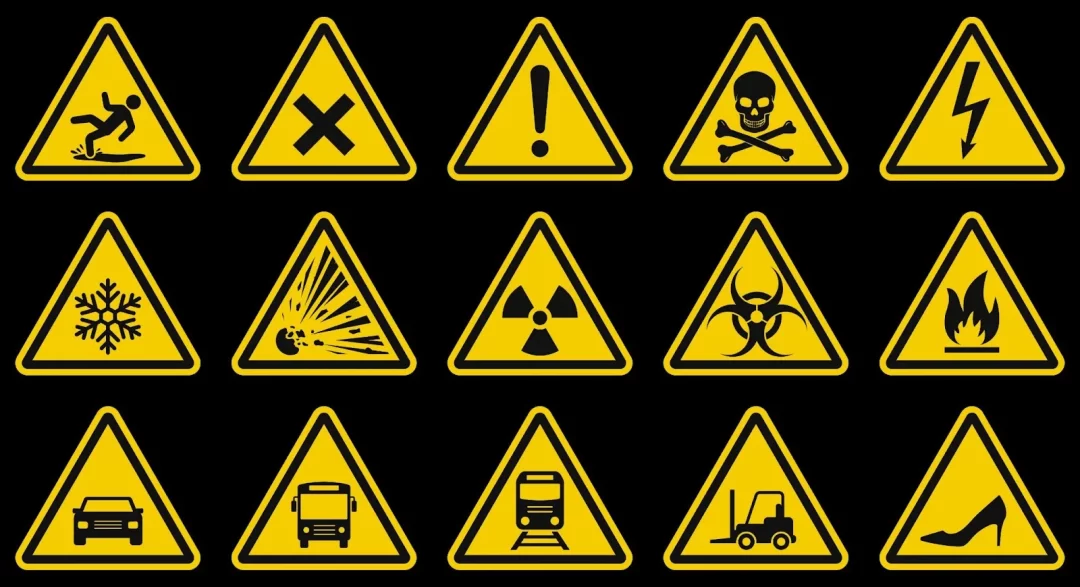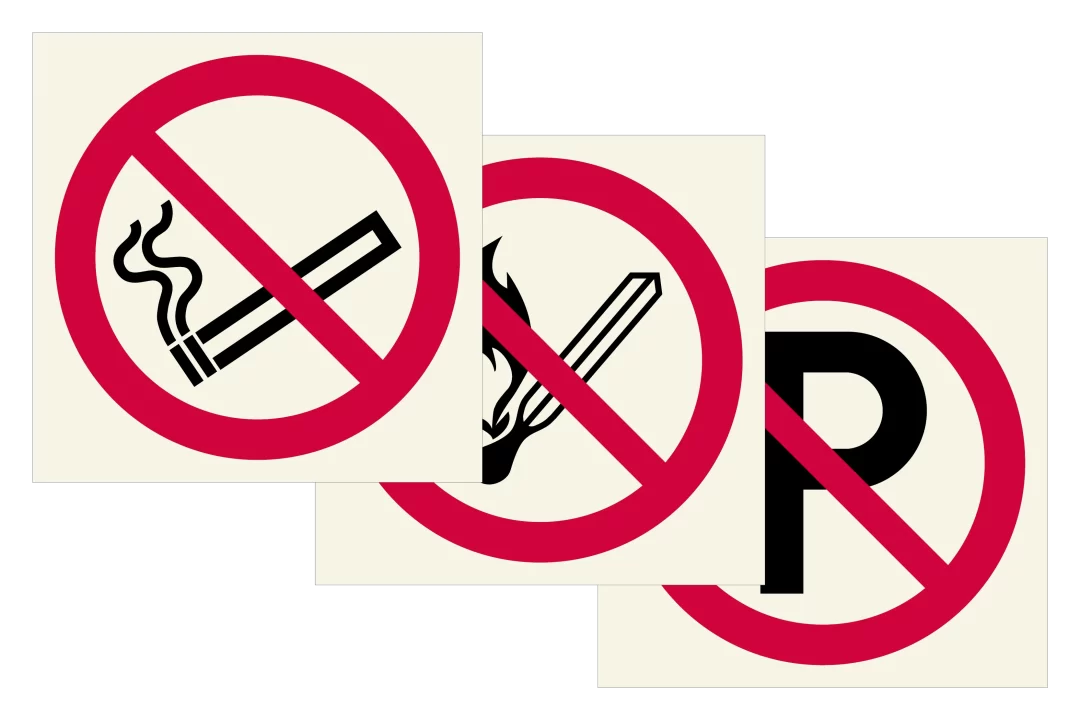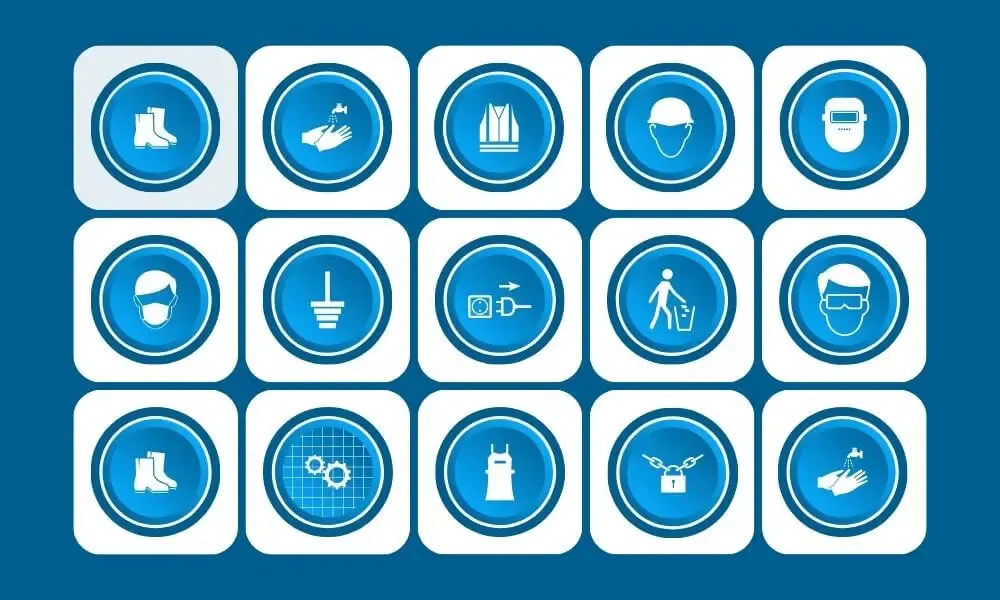What are the 4 Types of Safety Signs?
Safety signs play a crucial role in maintaining a secure environment. Whether on the road, in the workplace, or in public spaces, these signs communicate essential information to individuals. In this informative article, we will explore the four types of safety signs and delve into their significance. By understanding these signs, you’ll be better equipped to prioritize safety in various settings.
What are the 4 Types of Safety Signs?
Safety signs can be classified into four main types: regulatory signs, warning signs, prohibition signs, and mandatory signs. Each type serves a specific purpose and helps prevent accidents or hazards.
1. Regulatory Signs

Regulatory signs are used to enforce traffic laws and regulations. They guide drivers, pedestrians, and others on the road, ensuring a smooth flow of traffic and preventing potential accidents. Let’s take a closer look at some common regulatory signs:
I. Stop Signs
Stop signs are familiar octagonal signs with white lettering on a red background. They instruct drivers to come to a complete stop at intersections and yield the right-of-way to other vehicles or pedestrians.
II. Speed Limit Signs
Speed limit signs inform drivers of the maximum speed allowed on a particular road or highway. They help maintain safe driving speeds and reduce the risk of accidents caused by excessive speed.
III. Yield Signs
Yield signs are triangular signs with a white background and red lettering. They indicate that drivers must yield the right-of-way to oncoming traffic or pedestrians before proceeding.
IV. No Entry Signs
No entry signs, often depicted as a red circle with a white horizontal line, indicate areas where entry is prohibited. These signs are commonly found on one-way streets or private property.
V. One-Way Signs
One-way signs indicate that traffic is allowed to flow in only one direction on a specific road or street. They help prevent head-on collisions and confusion among drivers.
2. Warning Signs

Warning signs are designed to alert individuals to potential hazards or dangers ahead. They serve as visual cues to exercise caution and take necessary precautions. Here are some examples of warning signs:
I. Caution Signs
Caution signs feature a yellow background and black lettering or symbols. They warn of potential hazards, such as wet floors, uneven surfaces, or low clearance areas.
II. Danger Signs
Danger signs are typically red with white lettering and indicate immediate hazards that could cause serious injury or death. These signs are commonly seen in construction sites or areas with high-voltage equipment.
III. Construction Signs
Construction signs notify individuals of ongoing construction activities and potential hazards in the area. They help maintain safety for both workers and passersby.
IV. Slippery Surface Signs
Slippery surface signs inform people about areas prone to slippery conditions, such as wet floors or icy surfaces. These signs prompt individuals to exercise caution to prevent slips and falls.
V. Electrical Hazard Signs
Electrical hazard signs warn individuals of potential electrical dangers, such as high voltage areas or exposed live wires. They remind people to stay away and avoid contact with such hazards.
3. Prohibition Signs

Prohibition signs indicate actions or behaviors that are not allowed in a particular area. They help maintain order, safety, and compliance with rules and regulations. Let’s explore some common prohibition signs:
I. No Smoking Signs
No smoking signs prohibit smoking in designated areas. They are commonly found in public buildings, restaurants, and other places where smoking is restricted.
II. No Parking Signs
No parking signs indicate areas where parking is not permitted. They ensure traffic flow and prevent unauthorized parking, particularly in congested areas or emergency zones.
III. No Entry Signs
No entry signs, as mentioned earlier, indicate restricted areas where entry is prohibited. These signs help maintain security and safety in specific locations.
IV. No Trespassing Signs
No trespassing signs deter unauthorized access to private property. They protect the rights of property owners and help maintain privacy and security.
V. No Cell Phone Signs
No cell phone signs are often seen in areas where cell phone use is prohibited, such as hospitals, theaters, or certain workplaces. They promote concentration, safety, and respect for others.
4. Mandatory Signs

Mandatory signs communicate actions or behaviors that individuals must adhere to in a given area. They play a crucial role in ensuring safety and compliance. Let’s examine some common mandatory signs:
I. Wear Safety Gear Signs
Wear safety gear signs that remind individuals to wear appropriate safety equipment, such as helmets, goggles, or gloves, in specific areas or situations where hazards are present.
II. Keep Off Signs
Keep-off signs indicate areas where entry or access is strictly prohibited. These signs protect sensitive or dangerous areas and help prevent accidents or trespassing.
III. Emergency Exit Signs
Emergency exit signs guide individuals to the nearest exits in case of emergencies. They are essential in ensuring a swift and safe evacuation during a fire breakout or other emergencies.
IV. Hand Washing Signs
Hand washing signs are commonly found in restrooms and food preparation areas. They remind individuals to maintain proper hygiene by washing their hands thoroughly.
V. Fire Extinguisher Signs
Fire extinguisher signs identify the location of fire extinguishers in buildings or facilities. They assist in prompt response and containment of fires, contributing to overall safety.
Conclusion
Safety signs are invaluable tools for promoting safety and preventing accidents or hazards. By understanding the four types of safety signs—regulatory signs, warning signs, prohibition signs, and mandatory signs, we can effectively navigate and respond to different situations.
Regulatory signs guide us on the road, warning signs alert us to potential dangers, prohibition signs establish rules and restrictions, and mandatory signs ensure compliance and safety measures.
By familiarizing ourselves with these signs and their meanings, we can create a safer environment for ourselves and others. Always prioritize safety and follow the instructions provided by safety signs. Stay informed, stay cautious, and stay safe.
READ ALSO!!!






